![]() Joel & Robin Japan 2001
Joel & Robin Japan 2001








![]() Day 8: Kyoto
Day 8: Kyoto
|








|
|
| ||
Kyoto was the capital from its founding in 794 to 1868, and thus accumulated a fabulous variety of great religious and imperial buildings. The first on our tour was the Sanjusangen-do temple, where 1001 images of the Goddess of Mercy are planted in enormous rows, some signed by sculptors of the 13th century. Photography is not allowed, so this picture is from the brochure (why they were allowed to photograph for the brochure, I know not).
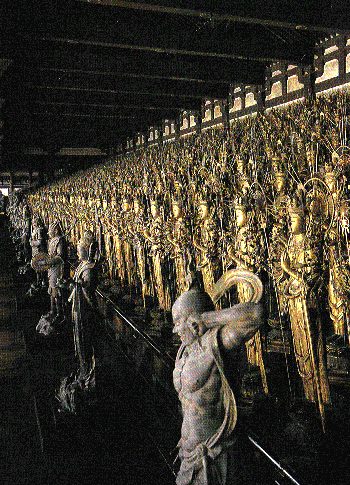
Then we went to the Ninan-ji shrine, where they were having an international exhibition of site-specific artworks. On the left, a Christo-esque framing in colored nylon. To the right, low reflecting pools filled with metallic dust, arranged around a pagoda.
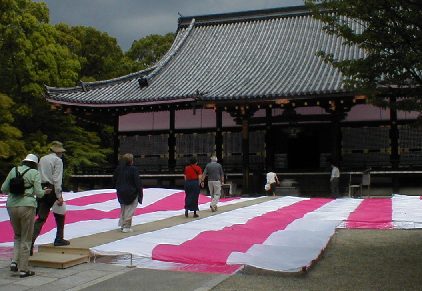
|
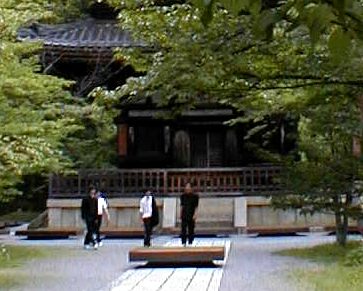
|
Next, the most famous of the Zen rock gardens: Ryoan-ji. The hordes of people and loudspeakers somewhat lessened the contemplative nature of the garden.
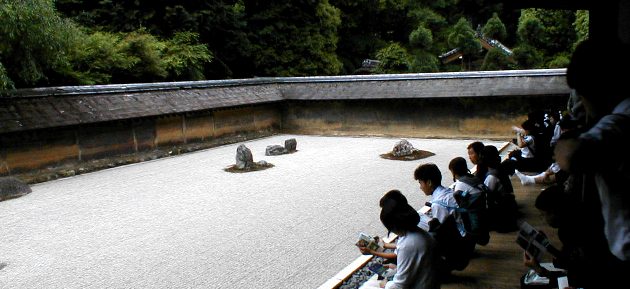
Next, we went to one of the most gorgeous places we saw in all Japan - Kinkaku-ji, the Golden Pavilion. It was originally constructed in the fourteenth century for a retired shogun, but was burned by an arsonist in 1950 and rebuilt in an exact replica.
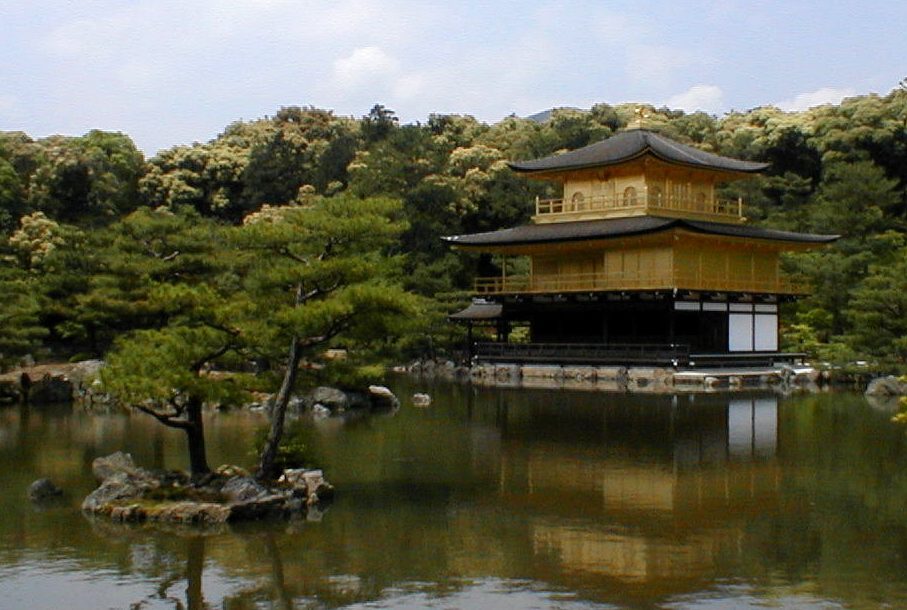
After lunch by the river, we saw the Aoi (Hollyhock) Festival, which started in the 6th century (and is little changed). There was a long procession of people dressed in ancient period costumes. Surrounded, of course, by huge hordes of modern Japanese, scrambling for the best sightlines.
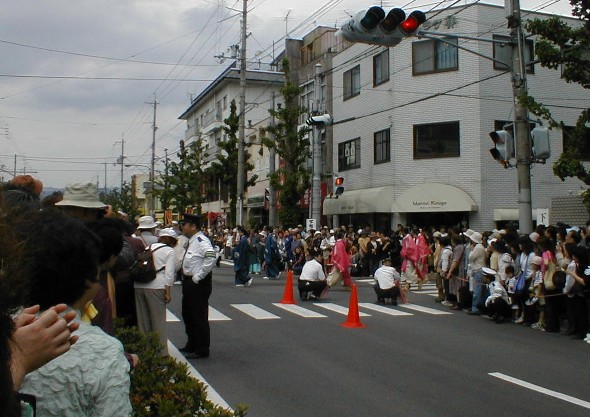
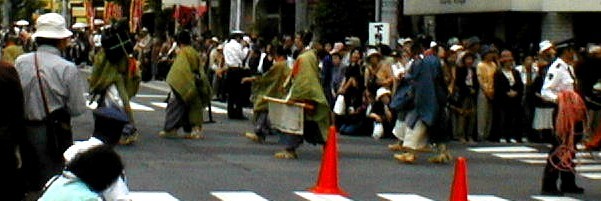
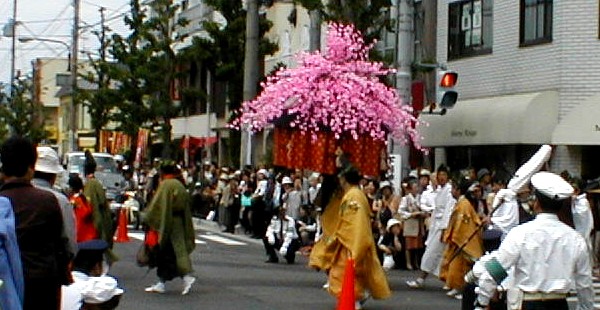
Finally, this long long day of sight-seeing concluded with the Silver Pavilion. It was built by the shogun grandson of the guy who built the Golden Pavilion. It never was silver-plated however - either as an economy measure or as a zen thing. The lovely zen-influenced garden includes a "moon-viewing platform."
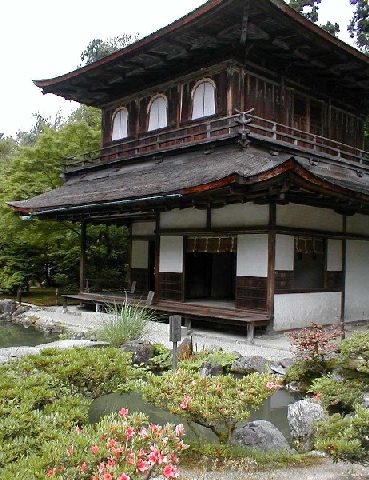
|
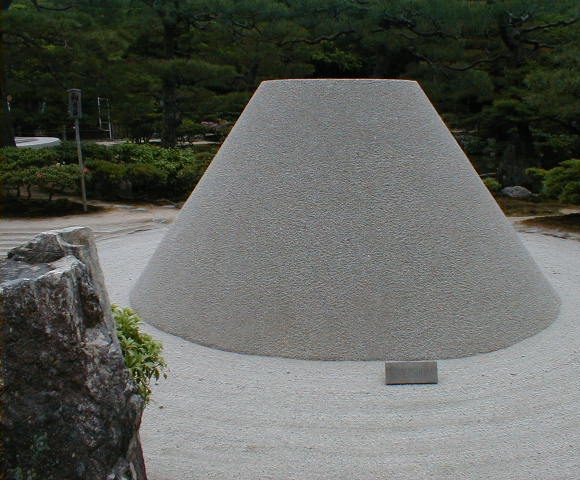
|
© 2001 Joel Abrams. All rights to images reserved.